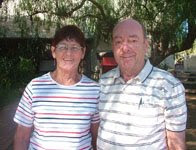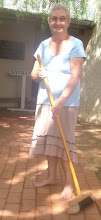A community based, volunteer run like ours is always dependent upon assistance to maintain operations. There are many ways you can help.
The most obvious way is by visiting the museum, bringing your friends and telling everyone what a wonderful place it is.
Then you could volunteer your time, we are always looking for people to staff the museum on the caretakers' days off. Also we are always looking for assistance in mainting the collection. One new volunteer has taken upon himself the task of rust-proofing some of our old metal tools and agricultural machinery. There is plenty more work to be undertaken.
Are you interested in accessioning? With approximately 3000 objects to catalogue, the curator is desperate for assistance.
Do you like working with school children? We would love to have a person create educational programmes/activities for children, and to visit schools to promote the museum. Those children are our future. We must create an interest in history now.
Recently a long time member of the Geraldton Historical Society donated her late husband's trailer to the museum. Now this is not a museum piece, but rather a functioning trailer and has been very useful in carting larger objects to the museum.
Another woman allowed us access to her late husband's tool shed. As well as obtaining close to 100 objects to be used in our new ToolShed display, she also allowed us to take modern tools, nails, screws, nuts and bolts etc we can use to maintain the museum.
You could also assist by being on the lookout for objects to add to our collection (just check our Collection Policy first).
Can you help us?




 Shag tobacco c1870
Shag tobacco c1870 pair Baby's slippers c1874
pair Baby's slippers c1874






















 In this 40⁰C heat, most of the garden is wilting, drooping and looking very sad, but one tree adores the summer. It is the Illyarrie, a small (some would call scruffy) eucalyptus that is endemic to this region. At this time of the year, the tree is covered in bright yellow blossom, truly an uplifting sight.
In this 40⁰C heat, most of the garden is wilting, drooping and looking very sad, but one tree adores the summer. It is the Illyarrie, a small (some would call scruffy) eucalyptus that is endemic to this region. At this time of the year, the tree is covered in bright yellow blossom, truly an uplifting sight.


